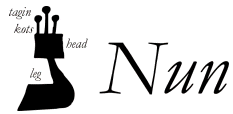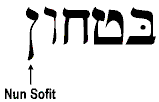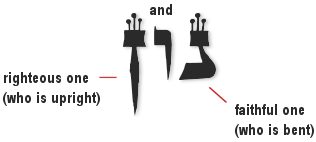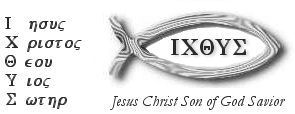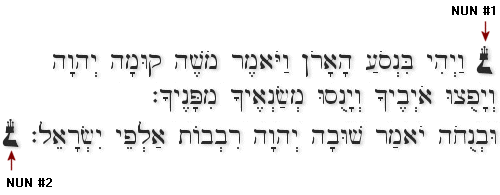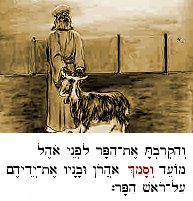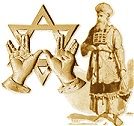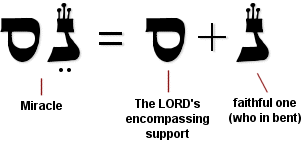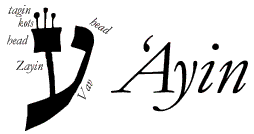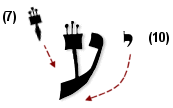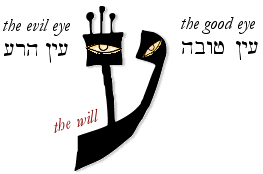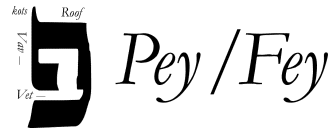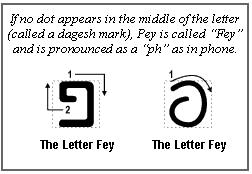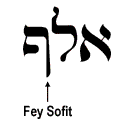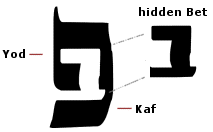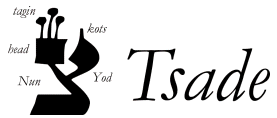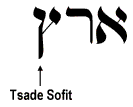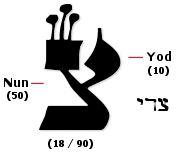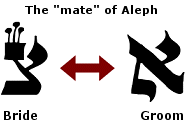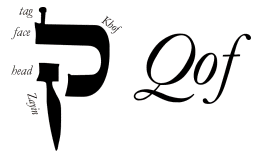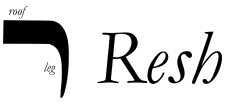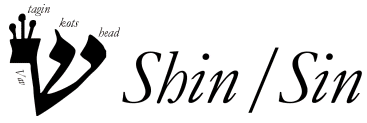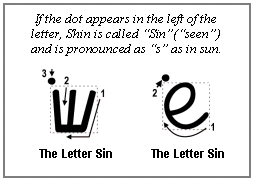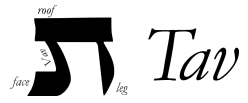[정보]베리칩 삽입이 서서히 다가오고있다
@건강 의료 보험제도의 탈바가지를 쓰고 베리칩
@삽입을 강제적으로 하려는 싯점입니다(2011년~2013년)
2000-06-26 미국 정부가 40년 동안 에너지 자원부를 지원하여 오랜 세월 끝에 드디어
2000-06-26 유전자 지도를 완성하고는, 이 날을 클린턴 대통령이 ‘세기의 날로 선포했다.
2000-07-00 유전자코드인 128 DNA code를 베리칩 안에다 넣자고 클린턴 대통령에 건의한다.
2000-07-00 그는 14세에 미국와서 귀화한 일본인으로 부시 정권 때는
2000-07-00 교통부 장관을 지내기도 했던 유력한 인물이다.(상공부 장관 놀만 미네타)
2000-10-00 128 DNA code가 내장된 베리칩이 생산되기 시작했다.
2000-10-00 이 사건을 클린턴 대통령이 ‘MINETA INCLUSION’ (미네타 안건)으로
2000-10-00 명명하여 미국 역사에 남기게 한 것이다.
2000-10-30 미네타 안건- 뉴욕시에서 미네타 안건을 발표하는 기자 회견장에,
2000-10-30 미네타 안건-여섯 명의 무장경호원에 둥그렇게 둘러 쌓여 입장하는 모습은
2000-10-30 미네타 안건-삼엄 하다못해 살벌하기까지 했는데, 이 사건은 지구상에 발 붙이고 있는
2000-10-30 미네타 안건-온 인류가 땅을 치고 울어도 부족한 엄청난 사건임을
2000-10-30 미네타 안건-잘 알고 있는 저들이, 총알이라도 날아 올 까봐 극한 경호를 펼쳤으리라.
2000-10-30 베리칩에 내장되어 있는 유전자 코드는, 적그리스도가 나타나는
2000-10-30 시점에 그들이 조작한 프로그램을 사람들의 피부 속에 이미
2000-10-30 이식된 모든 베리칩으로, 인공위성(GPS)을 통해 일제히 전송시키면,
2000-10-30 베리칩에 내장된 인간에게만 있는 고유의 3백 만개 염색체의 분류
2000-10-30 조합인 128 유전자 코드가 변형을 일으켜 영혼을 지워 버리고,
2000-10-30 꼭두각시처럼 복종케 하는 로봇(robot)으로 전락시킨다.
2000-10-30 베리칩은 사람의 마음과 생각을, 뇌파와 유전자
2000-10-30 배열을 바꿔서 껍데기만 사람인 독 안에 든 쥐(기계) 로 만들어 버린다.
2000-10-30 GPS 내장: 누가, 어디에서, 무엇을 하는지 24/365일 정보기지(database)에 녹화된다.
2000-10-30 방대한 정보기지 (database): 개인에 대한 자료의 총 집합 소로써,
2000-10-30 국토 안보부 database, FBI database, 연방이민국 database가 있다.
2002-00-00 베리칩은 2002년, Florida 주의 한 가족이 미국에서 처음 시술 받다.
2003-10-00 베리칩사-FDA에 특허 신청,
2004-10-12 날짜가 적혀 있는 편지 형식으로 된 이 서류는,
2004-10-12 베리칩사가 제출한 특허신청에 대한 FDA의 답변서이자
2004-10-12 베리칩에 대해 1 년간 검토했던 내용을 집대성한,
2004-10-12 특허에 관한 최종 통보문이다.
2004-10-12 이 서류에서 FDA는 베리칩에 대한 정의를 이렇게 내리고 있다.
2004-10-12 베리칩은 환자의 팔에 이식하는 (implantable), ID 번호가 있는 RFID 마이크로칩이다.
2004-10-12 베리칩은 환자의 피하조직에 이식하는 plantable, 초소형의 마이크로칩이다 (microchip).
2004-10-12 베리칩은 일반 칭함으로는 2종기기 (class II device) 에 속한다.
2004-10-12 미국 식품의약청(FDA)-베리칩을 의료용으로 승인했기 때문에, 받는 사람을 ‘환자’로 표현했다..
2004-10-12 간단히 말해, 16자리 수 신분증 번호라고 이해하면 된다.
2004-10-12 그러나, 현재 소셜 번호 9자리 수에서 16자리숫자로 단위가
2004-10-12 급격히 늘어난 것은, 앞으로 이 ID는 미 국민 뿐만 아니라 전
2004-10-12 세계 인구 68억을 대상으로 하고 있기 때문이다.
2004-10-12 (전인류가 받게 될 68억 개의 베리칩 신분증 번호).
2005년 베리칩-한국,일본, 중국, 타이완, 스위스, 러시아, 폴란드, 중앙아메리카,
2005년 베리칩-에콰돌, 사우디아라비아, 말레이시아, 타일랜드, 인도네시아,
2005년 베리칩-라틴아메리카, 캐나다, 영국, 터키, 케냐, 쿠웨이트, 두바이,
2005년 베리칩-아랍연합, 오스트레이리아, 남아프리카공화국, 콜롬비아,
2005년 베리칩-베네주에라, 브라질, 아르헨티나, 캐리비언, 도미니카공화국,
2005년 베리칩-멕시코, 이스라엘, 독일, 푸에토리코, 칠레, 파라과이,
2005년 베리칩-스페인, 폴투갈,우르과이, 네델란드등 (2003-2005년 판매자료),
2005년 베리칩-전 세계로 수출되어 지구 6개 대륙을 뒤덮다시피 했다.
2005년 베리칩-한국은 이와 관련해 베리칩사로부터 2005년 상장을 수여받았다.
2007-07-30 미 국방부에서 군인들의 머리에 마이크로칩을 놓을 계획 발표 (2007년 7월 30일
2007-07-30 컴퓨터에 연결되어 기능: 베리칩에는 바코드가 들어있는데,
2007-07-30 모든 바코드는 세 군데에 6의 기둥이
2007-07-30 세워진 형태인 666으로 구성되어 있어서 비로소,
2007-07-30 컴퓨터가 읽을 수 있다. (김재남 목사 CD 참조)
2007-07-30 병사들 두뇌에 마이크로 칩 이식하는 펜타곤
2007-07-30 애듬 토마스 ( Adam Thomas )제출
2007-07-30 미국방성(부)은 병사들의 건강정보를 모니터하기 위해,,
2007-07-30 마이크로 칩을 그들 뇌에 이식하는 것을 계획하고
2007-07-30 있는데,,이미 $ 1,60 만 달러를 주고 클램선대학 (Clemson University)의
2007-07-30 생체공학부, 생체감지기, 생체칩 센터에 이식용 " 생체칩(biochip)"
2007-07-30 개발을 위해 계약을 체결하였다.
2007-07-30 국가 의료보험제도를 갖고 있는 나라는 프랑스, 독일, 영국,
2007-07-30 아이스랜드, 이태리, 덴마크, 핀란드, 아프카니스탄, 한국,
2007-07-30 아르헨티나, 오스트리아, 벨기에, 브라질, 캐나다, 칠레, 중국,
2007-07-30 쿠바, 코스타리카, 오스트레일리아, 뉴질랜드, 사우디아라비아,
2007-07-30 그리이스, 룩셈부르크, 네델란드, 오만, 포르투갈, 홍콩, 싱가폴,
2007-07-30 바레인, 스리랑카, 노르웨이, 브루나이, 아랍연합, 스위스, 슬로바니아,
2007-07-30 브라질, 쿠웨이트, 아일랜드, 사이프러스, 이락, 러시아, 헝가리,
2007-07-30 말레이시아, 우르과이, 파라과이 (2007년 자료)
2007-11-28 아론루쏘(Aaron Russo)-Rockefeller Reveals 9/11 FRAUD to Aaron Russo
2008-10-10 현재 대공황 예정되어있으며 전쟁은 언제시작되는지 궁금함
2008-04-08 북미연합과 베리칩 음모 (verichip) 단일화페:아메로
2008년 베리칩-오바마는 대통령에 당선(11/5/2008) 되자마자,
2008년 베리칩-전자의무기록(Electronic Medical Records)에
2008년 베리칩-오마바 기자 회견을 백악관에서 가졌다. (08/12/08)
2008년 베리칩-(12/8/2008, Youtube.com / Part of the Obama Plan).
2009-09-00 베리칩사-Receptors LLC라는 회사와 파트너십을 체결한다.
2009-09-00 베리칩사-바이러스 추적 장치를 개발해 내는 등 상당히 역동적으로 움직이는 데,
2009-09-00 베리칩사-이 기업에 지속적인 관심을 갖고 눈 여겨 봐야 한다.
2009-09-00 베리칩사-ADS (Applied Digital Solutions), (모회사)
2009-09-00 베리칩사-> Digital Angel > Positive ID 코퍼레이션,
2009-09-00 베리칩사-(방계회사) Positive ID는 현재 크레딧 체크도 가능하다.
2009-09-00 디지탈엔젤사-스틸 볼트라는 신분이나 신용정보
2009-09-00 디지탈엔젤사-도난을 방지하는 기술을 취급하는 회사를 인수한 후,
2009-09-00 디지탈엔젤사-베리칩을 파지티브 ID (Positive ID ) 로 이름을 바꿔 버렸다 “.
2009-09-00 수시로 둔갑하고 꼬리를 감추는 이 회사의 속임수에
2009-09-00 넘어가지 말아야 할 것은, 회사 이름을 베리칩사에서 Positive ID사로
2009-09-00 바꾼 후에 Positive ID니, Health Link니 하는 포장을 베리칩에 씌워
2009-09-00 TV에 선전하고 있으며, 이 회사가 지난 몇 해 동안 여러 차례 말
2009-09-00 바꾸기를 해서, 베리칩사에서 말한 일곱 가지 거짓말이
2009-09-00 엄연히 존재하고 있음을 간과해서는 안된다.
2009-09-00 이것이 ‘미혹’인 것처럼, 건강보험개혁법 1001 페이지에 있는 ‘
2009-09-00 a class II device that is implantable ’ 을 ‘베리칩’ 이라고
2009-09-00 하면 간단할 것을, 본토인들도 알 수 없는 단어들을
2009-09-00 길게 늘어놓고, 뭔지 알 수 없게 한 ‘ 미혹 ’ 인 것이다.
2009-12-24 미국-건강보험 개혁안이 미국 상원을 통과하였다
2010-03-21 ●미국-건강보험 개혁안이 미국 하원에서 통과하였다.(찬성 219표, 반대 212표)●
2010-03-21 미국-일요일 저녁에 통과된 건강보험개혁안은
2010-03-21 미국-과거에 있어왔던 전통적이고 민주적인 방법을 택하지않고
2010-03-21 미국-색다른 편법들을 동원하여, 전에 없는 놀라운 방식으로 강행되었다.
2010-03-21 미국-막대한 예산을 들여, 저소득층 뿐 아니라 중산층까지
2010-03-21 미국-보험료를 대 주도록 했고, 건강보험 가입 여부를 미국 국세청 (IRS)가
2010-03-21 미국-조사하도록 했으며, 직원 16.000여명을 증원하여 건강보험에
2010-03-21 미국-가입하지 않은 사업체와 개인을 대상으로, 세무조사와
2010-03-21 미국-벌금을 추징하는 그 이면 깊숙히에, 어마어마하게
2010-03-21 미국-악한 계획이 숨겨져 드러나지 않고 있다.
2010-03-21 미국-건강보험에 소요되는 비용이 미국 전체
2010-03-21 미국-경제의 1/6을 차지하며, 작년 (2009) 에는 재정적자가 $1.4조에 달했는데,
2010-03-21 미국-오바마 대통령은 미 역사상 최대 재정 적자를 초래한 대통령으로 기록될 전망이다
2010-03-21 전 세계가 궁극적으로 유럽의 보험제도를 채택하게 될 것으로 보이는데,
2010-03-21 선진국들이 건강 보험제도를 통해 베리칩을 놓고 나면,
2010-03-21 이미 베리칩을 수입한 그 밖의 국가에서의 베리칩실시는
2010-03-21 시간내에 이뤄질 수 있게 된다. 미국의 건강보험법이
2010-03-21 성냥개비를 꺼내든 것이라면, 우리 앞에 남아있는 시간을
2010-03-21 삽 시간이라 표현해도 좋을른지 모르겠다.
2010-03-23 미국 건강보험법 발효된다. ( 베리칩 )
2010-03-23 법이 통과되어 대통령이 서명한 ●2010년 3월 23일부터●
2010-03-23 ●3년 (2013년 3월 22일)을 넘기지않는●
2010-03-23 어느 시점부터 (베리칩)을 시행한다
2010-03-23 2천 3백 페이지가 넘는 건강보험개혁법의 전체적인
2010-03-23 내용들은 정부가 개업의사나 병원, 사설보험사들, 사업가, 자영업자,
2010-03-23 제약회사와 환자들에게 독단적인 파워를 행사하고 장악하는
2010-03-23 듯한 내용들로 넘쳐나며, 건강보험개혁은 누구를
2010-03-23 위한 것인지, 모든 조항의 주체가 정부로 되어있다.
2010-03-25 미국-건강보험개혁법을 홍보하는 아이오와 시티에서
2010-03-25 미국-벌어진 한 집회에 참석한 오바마 대통령은, “이제는 건강보험개혁
2010-03-25 미국-이전 상황으로 돌아갈 수 없다.”라고, 의미심장한 발언을 했는데,
2010-03-25 미국-그렇다. 이것은 실로, 미국 국민을 대상으로 마이크로칩을
2010-03-25 미국-시행하는 토대가 마련된 것이다.
2010-03-25 미국-건강보험에 가입하지 않으면 2014년부터는 벌금이 부과되는데,
2010-03-25 미국-개인일 경우, 2015년엔 2014년의 부과된 액수 ($95) 의 세배,
2010-03-25 미국-2016년엔 일곱배가 된다.
2010-03-25 미국-건강보험에 가입하지 않으면, 입원비와 치료비를 환자가
2010-03-25 미국-경비 전체를 부담해야 하며, 국가가 치료비를 지불해주지 않는데도
2010-03-25 미국-불구하고, 벌금 처벌까지 받아야 한다.
2011년 베리칩-동전 앞면이라고 한다면,
2011년 베리칩-동전 뒷면은 병원 서류의 디지털화, 컴퓨터화라고 할 수 있다.
2011년 베리칩-병원 서류시스템의 컴퓨터화, 즉 전자의료기록(Electronic Medical Records /EMR)이
2011년 베리칩-이뤄지지 않으면 베리칩은 사용이 불가능하다.
●컴퓨터 기반 환자기록 (CPR=Computer Based Patient Record) ●
컴퓨터 기반 환자 기록 (CPR)은 환자의 진료정보를
필요시에 어느 병원이나 보건기관에서
즉시 사용할 수 있도록 전국적인 의무기록 정보 시스템을
구축하는 것을 말한다.
●전자 의료 기록( EMR = Electronic Medical Record ) ●
궁극적으로 의무기록전산화가 추구하는 방향은 CPR이나 이의 실현은
상당히 많은 시간을 요하므로 먼 저 병원내의 의무기록전산화를
중심으로 하여 개발하여 사용하는 것을 말한다.
●전자 환자 기록( EPR= Electronic Patient Record )
컴퓨터 기반 환자기록 (CPR)과 전자 의료 기록 (EMR)은
기존의 챠트를 스캐닝(Scanning )하여
진료정보를 활용하는 것을 인정하지 않는 것인데 반해
전자 환자 기록(EPR)은 실제 병원에 종사하는
사람들이 모든 정보를 텍스트 형태로 입력하는 것이
쉽지않으므로 전자 의료 기록(EMR)로 가기위한
前단계로 텍스트 형태( Text )로 입력할 수 있는 것은
텍스트(Text)로 입력하고, 텍스트( Text )로 입력이 불가능한것은
스캐닝 (Scanning )을 통하여 입력한 다음 이들을
연결하여 활용 하는 시스템을 말합니다.
@베리칩은 위의 ●컴퓨터 기반 환자기록(CPR)●과
@●전자 의료 기록(EMR)●와 ●전자 환자 기록(EPR)●
@구축하지 않고는 도저히 사용할수 없는 칩이라는 겁니다.
@간단하게 보면 국가가 개인의 정보를 철저하게
@사생활 감시& 개인의 이동 통제하려는 의도(= 빅브라더 :감시 독재 체제구축)를
@가지고 있다고 할수있습니다.
@요즘 개인정보 해킹 유출은아무것도 아닌것입니다.
@국가가 바로 해킹하는 범죄자라고 해도 과언이 아닌것입니다.
@검은도당( 프리메이슨,일루미나티 ,그림자정부 .각국 정부 권력층)이
@미국의 국가의료보험제도( ◆오마바와 민주당이 통과시킨 법안◆ )는
@국가 개인 감시체제구축을 하기위한 밑그림이었던것입니다.
@미국에서 건강보험문제는 국민의 눈을 가리기위한 쇼였던겁니다.
@단순히 빈곤층 의료보험을 가입해서 치료해준다고하니
@눈이 헤까딱해서 찬성을 하였던 것이지요..
@물론 미국의 의료제도가 철저하게 민간 의료보험제도 하에서
@빈곤층들이 치료를 못받는 것도 존재 하는는 것이지만 말입나다.
2011년 베리칩-그것은 병원의 모든 손으로 적는 챠트나 서류, 서류보관함(file cabinets)이
2011년 베리칩-2011년 베리칩-사라지고, 서류들을 디지털화하여
2011년 베리칩-데이타베이스(database)로 보내 저장하게 되는 것으로 베리칩과
2011년 베리칩-스캐너, 컴퓨터 데이타베이스로 대체되는 일대 혁명을 의미한다.
2011년 베리칩-쉽게말해, 모든 서류가 컴퓨터 안으로 들어가는 것이다.
2011년 베리칩-이제부터는 병원가면 종이에 적거나 싸인하거나,
2011년 베리칩-신분증이나 보험카드는 필요가 없고, 의사가 환자의
2011년 베리칩-몸에 심어진 베리칩을, 그로서리 마켙의 쥬스병을 스캔 하듯이
2011년 베리칩-스캐너를 바짝 갖다대면, 가격 대신에
2011년 베리칩-환자의 의료기록이 모니터에 좍 뜨는 것이다.
2011년 베리칩-Electronic Medical Records (EMR ),
2011년 베리칩-Electronic Health Records (EHR),
2011년 베리칩-Digital Health Records (DHR),
2011년 베리칩-Computerized Health Records(CHR) 등은
2011년 베리칩-다 같은 말인데, 편의상 EMR을 주로 쓴다. (Google.com /
2011년 베리칩-EMR, Obama를 search하면 바삐 돌아가는
2011년 베리칩-EMR 관련 움직임을 볼 수 있다.)
2011년 베리칩-스캐너가 베리칩안의 16자리 수를 읽어서 환자의 신분을 알아내고,
2011년 베리칩-인공위성을 통해 그 사람에 관한 정보( database )에 연결시킨다.
2011년 4월9일 현재 한국도 시기가 미국보다 늦더라도 베리칩을 강제적으로
2011년 4월9일 하게 될것 같습니다.(현재 한국의 권력층들은 미국의 개들이니깐 말입니다.)
2011년 않하는게 제일 좋은 방법인데 ..참 한숨이 나오는군요 휴~
베리칩 관련 -감시의눈(한국어 더빙)
http://www.youtube.com/watch?v=poS0xOxMP3Q
베이칩관련-CNN뉴스( 한글자막 )
http://www.youtube.com/watch?v=cuOmqcj4_tE
2012년 베리칩-EMR 시스템 전환 보조로 정부가 $190억을
2012년 베리칩-책정하여 개업의사 한 명당 $44,000씩을 지원하고,
2012년 베리칩-의사 10명 고용한 병원에는 $44만이 지원된다.
2013년 미국 베리칩-연방 빈곤선의 133%에 해당되는 사람은
2013년 미국 베리칩-본인이 보험을 선택하지 않을 경우, 자동으로
2013년 미국 베리칩-메디케이드에 등록이 된다 (본인의사와 상관없이 반 강제).
2013년 미국 베리칩-고용주는 직원들의 건강보험의 자동가입 을 제공 한다.
2013년 미국 베리칩-직원들이 원하든 않든, 자동으로 보험에
2013년 미국 베리칩-가입되며, 50인 이상 고용한 기업은
2013년 미국 베리칩-미 가입직원 한 명당 $2,000 벌금처벌 받는다
2013년 미국 베리칩-벌금을 피하려면, 늦어도 ●2013년 12월 31일까지●는
2013년 미국 베리칩-정부가 제공하는 건강보험에 가입해야만 된다
2013년 미국 베리칩-국민의 95%가 건강보험에 가입된다.
2013년 미국 베리칩-그럼 나머지 5 %의 무 보험자들은 누구인가?
2014년 미 국민들이 2013년 12월 31일까지 건강보험에 가입하지 않으면
2014년 2014년부터 벌금처벌을 받는 것과 같이, 이들은 2014년 말까지
2014년 끝내지 않으면 2015년까지 완료시킬 예정이다.
2014년 의사들은 건강개혁법의 57-65 페이지에 있는 HITECH ACT (하이텍 법령)에
2014년 따르게 되는데, 이미 전환을 마친 병원들도 있다.
2014년 베리칩을 아는 사람은 EMR(전자의무기록) 까지는 생소하며,
2014년
전자의무기록(EMR)
종사자들은 베리칩까지는 잘 모르고,
2014년 전자의무기록(EMR)을 단지 현대인들의 컨셉인 테크놀로지로 이해하는 정도다.
2015년 2015년부터 1년 총 메디케어 환자치료비 청구액의 5%나
2015년 돠는 벌금과, 자가비용으로 시스템을 갖추어야 한다.
2015년 2015년까지 완료시킬 예정이다
출처: http://cafe.daum.net/waitingforjesus/BOD2/1350


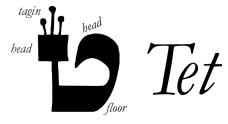










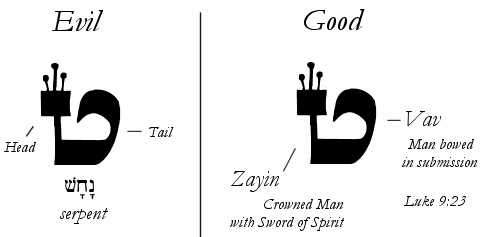
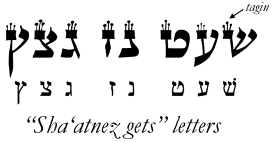






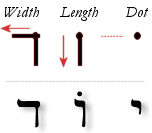



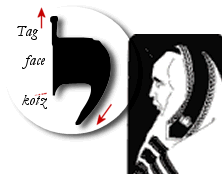







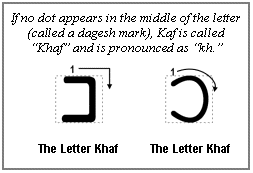





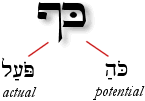



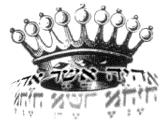



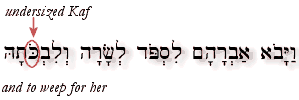
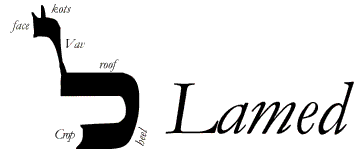





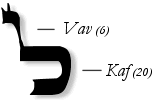






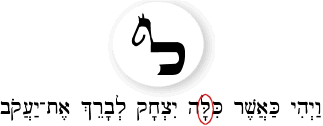
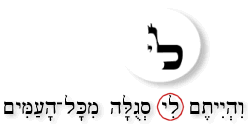

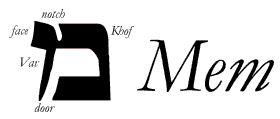





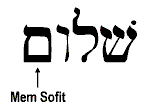




![Proverbs 9:6[7h] (BHS)](http://www.hebrew4christians.com/Grammar/Unit_One/Aleph-Bet/Mem/isaiah9-7closedmem.gif)
![Proverbs 9:6[7h] (BHS)](http://www.hebrew4christians.com/Grammar/Unit_One/Aleph-Bet/Mem/isa9-6.gif)
![Proverbs 9:7[8h] (BHS)](http://www.hebrew4christians.com/Grammar/Unit_One/Aleph-Bet/Mem/isa9-7.gif)



